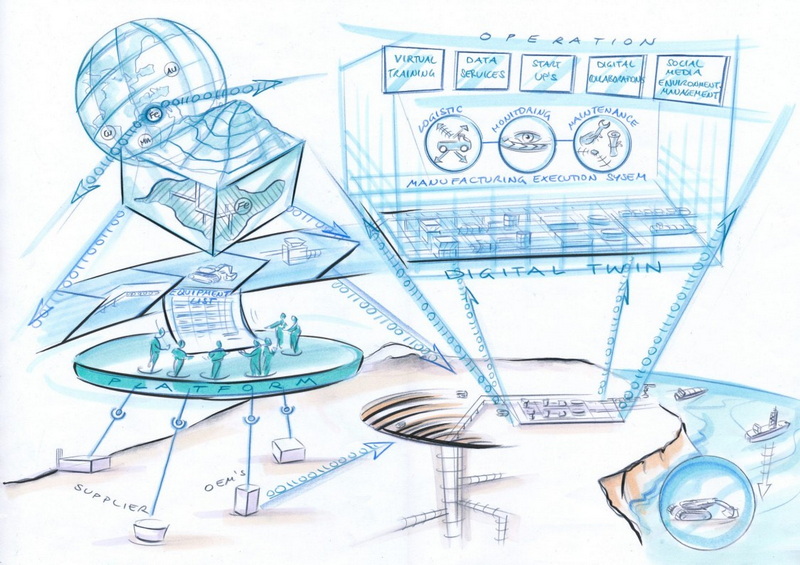DT in Manufacturing
Although the development of DT started from the Aerospace industry, the industry which is exploring the technology the most is the manufacturing industry. DTs have been described as the key enablers of Industry 4.0. Any manufactured product goes through four main phases throughout its life cycle: design, manufacture, operation, and disposal . Smart manufacturers can leverage DTs in all four phases of the product

A DT can be a useful tool at the stage of turning raw materials into a finished product in resource management, production planning, and process control. A DT can help in (i) production planning and control by planning and executing the orders automatically and improving decision support by means of a detailed diagnosis, (ii) maintenance by evaluating and analyzing machine conditions, identifying any changes in the production system and its effects, and taking anticipatory maintenance, and (iii) layout planning by evaluating the production system continuously. By predicting failure, the DT cuts down the downtime as it allows to either schedule mainte-nance or take preventive measures. Method to implement DT for a manufacturing plant, resulte in a significant time reduction in monitoring the machine states, forklift location, asset location, and constraint management process.
After the sale of the product, when it is in operation, manufacturers can receive the real-time product operation state via its DT and can develop a maintenance strategy accordingly. DT can provide nine types of product services which includes the service of (i) real-time state monitoring, (ii) energy consumption analysis and forecast, (iii) user management and behavior analysis, (iv) user operation guides, (v) intelligent optimization and updates, (vi) product failure analysis and prediction,(vii) product maintenance strategy, (viii) product virtual maintenance, and (ix) product virtual operation.
How to use this technology in each manufacturing step?
#1: Designing a Product
Digital twins may be used as virtual prototypes throughout the design process, and they can be altered to test alternative simulations or designs before investing in a physical prototype. This opportunity reduces the number of iterations necessary to get the product into production, which saves both time and money in the long run.
#2: Process Optimization
It is possible to establish a twin of a manufacturing process and monitor key performance indicators using sensors installed on a production line. Modifications to the digital twin can reveal new opportunities for production optimization and strategies to decrease variations and aid in the root-cause investigation.
#3: Quality Systems
Monitoring and responding to data from the IoT sensors during the manufacturing process is critical for maintaining high quality. When establishing a digital twin, you may model every aspect of the manufacturing process to see where deviations occur and whether or not better materials or procedures can be employed to save costs.
#4: Maintenance Made Easy
A digital twin of an individual piece of equipment or industrial process can detect deviations that suggest the need for preventative repairs or maintenance before a more significant problem arises. These individuals may also assist with the optimization of load levels, tool calibration, and cycle durations.
